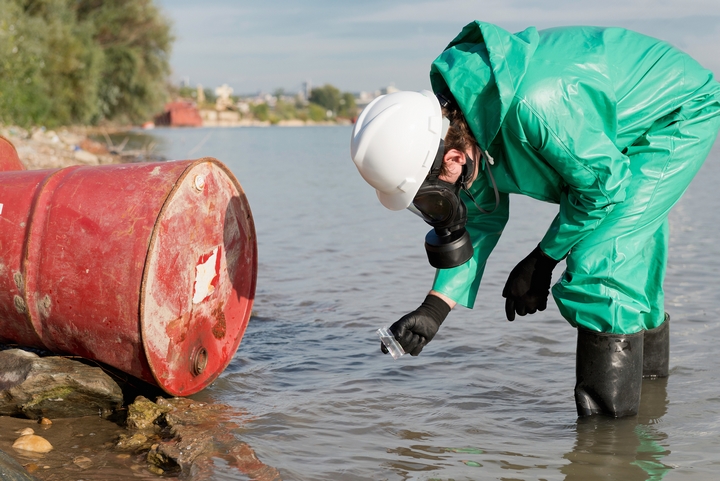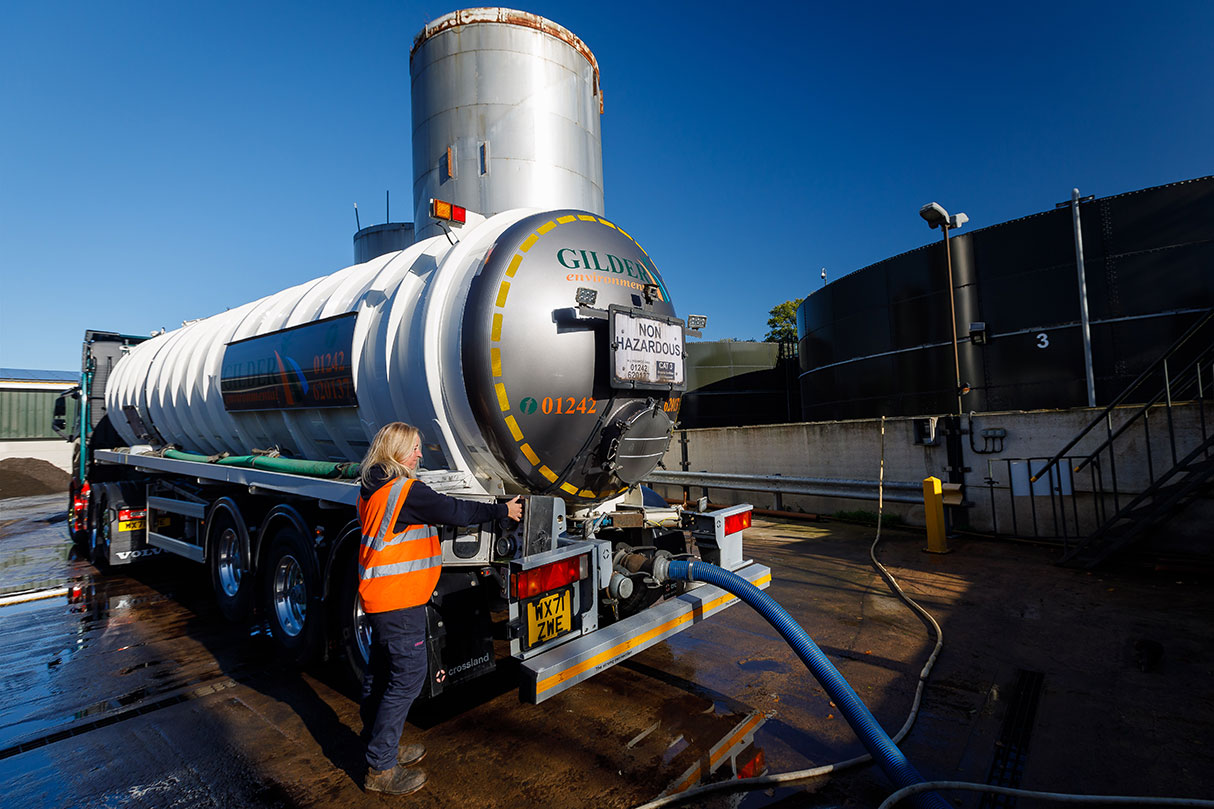Industrial Wastewater Treatment: Customized Solutions for Complex Wastewater Challenges
Industrial Wastewater Treatment: Customized Solutions for Complex Wastewater Challenges
Blog Article
How Fluid Garbage Disposal Works: A Detailed Review of Methods and Technologies Employed

Introduction of Fluid Waste Kind
The complexity of liquid waste kinds demands a thorough understanding of their characteristics and implications for disposal. Fluid waste can generally be classified right into a number of types, including commercial, metropolitan, farming, and contaminated materials. Each group shows unique residential properties, needing particular management strategies to minimize ecological and health and wellness risks.
Industrial fluid waste stems from making procedures and commonly includes a range of impurities, such as hefty metals, solvents, and natural compounds. Municipal fluid waste, mainly comprising wastewater from houses and industrial establishments, has organic issue, nutrients, and microorganisms (industrial wastewater treatment). Agricultural liquid waste, consisting of runoff from ranches, may contain plant foods, pesticides, and pet waste, posing threats to water high quality and ecosystems
Harmful fluid waste is characterized by its toxicity, sensitivity, or possible to cause harm. Comprehending these varied fluid waste kinds is essential for establishing reliable disposal techniques and ensuring conformity with ecological policies.
Physical Treatment Approaches

Screening is the initial action, where bigger bits and debris are eliminated from the liquid waste using screens or grates. This process protects downstream tools from damages and makes sure smoother procedure. Complying with screening, sedimentation makes use of gravitational pressure to separate solids from liquids. In sedimentation containers, larger bits clear up near the bottom, creating a sludge layer, while the cleared up liquid can be further dealt with.
Purification is one more vital technique that entails passing the liquid through permeable materials, such as sand or membranes, to record smaller sized bits. This step enhances the high quality of the liquid, making it suitable for succeeding therapy procedures.

Chemical Treatment Methods
Chemical treatment methods are vital for successfully managing liquid waste, particularly in resolving liquified and colloidal pollutants that physical approaches might not appropriately eliminate. These methods make use of numerous chemical agents to neutralize, precipitate, or change harmful compounds right into less harmful types.
One typical approach is coagulation and flocculation, where chemicals such as alum or ferric chloride are added to promote the aggregation of put on hold particles. This procedure improves sedimentation, enabling easier removal of the resulting sludge. Furthermore, oxidation processes, utilizing agents like chlorine or ozone, are employed to break down intricate organic compounds and virus, rendering the waste safer for discharge or additional therapy.
Neutralization visit our website is an additional why not look here vital strategy, which changes the pH of acidic or alkaline waste streams to neutral levels, preventing prospective harm to downstream systems and the environment. In addition, advanced oxidation processes (AOPs) utilize mixes of oxidants and ultraviolet light to degrade persistent contaminants, attaining a higher level of treatment efficiency.
Organic Therapy Procedures
Organic treatment processes play an essential role in the management of fluid waste by making use of microorganisms to decompose raw material and decrease contaminant levels. These processes can be extensively categorized right into anaerobic and aerobic treatments, each utilizing particular microbial communities to attain efficient waste deterioration.
Cardio therapy involves making use of oxygen to promote the malfunction of organic materials by germs. This process is commonly carried out in activated sludge systems, where aeration storage tanks provide a conducive setting for microbial growth, bring about the oxidation of natural contaminants. The resultant biomass visit this website can be separated from dealt with effluent through sedimentation.
On the other hand, anaerobic therapy happens in the lack of oxygen, relying upon various microorganisms to damage down raw material. This approach is particularly helpful for high-strength waste, as it creates biogas, a renewable resource source, while reducing sludge manufacturing. Technologies such as anaerobic digesters are regularly used in industrial and metropolitan applications.
Both anaerobic and aerobic organic therapies not only decrease the environmental influence of liquid waste however additionally facilitate source healing, making them important parts of sustainable waste monitoring techniques. Their effectiveness, versatility, and effectiveness sustain their extensive application across different sectors.
Arising Technologies in Disposal
Ingenious approaches to liquid waste disposal are quickly evolving, driven by advancements in technology and an enhancing emphasis on sustainability. Among these arising innovations, membrane layer bioreactors (MBRs) have obtained grip for their capacity to incorporate biological therapy with membrane layer purification, resulting in top notch effluent that can be reused in various applications. MBRs allow smaller impacts and extra effective operations contrasted to standard systems.
One more promising growth is the use of anaerobic food digestion incorporated with nutrient recovery technologies, which not only treats liquid waste however additionally creates biogas and recoups important nutrients like nitrogen and phosphorus. This dual advantage boosts resource effectiveness and lowers ecological influence.
In addition, advanced oxidation procedures (AOPs) are being adopted for the destruction of complicated natural contaminants. These approaches make use of powerful oxidants and drivers to damage down pollutants at the molecular level, using a highly efficient option for challenging waste streams.
Furthermore, the integration of fabricated intelligence and artificial intelligence in waste management systems is optimizing operational efficiency and predictive upkeep, causing lowered prices and boosted environmental conformity. These modern technologies reflect a substantial change in the direction of more effective and sustainable fluid waste disposal techniques.
Verdict
To conclude, effective fluid waste disposal demands a detailed understanding of different strategies and technologies. The integration of physical, chemical, and organic treatment methods makes sure the efficient management of diverse waste types. Moreover, the emergence of innovative innovations boosts therapy effectiveness and advertises sustainability in waste management practices. By continually progressing these approaches, it ends up being feasible to attend to the expanding difficulties connected with liquid waste, inevitably contributing to environmental management and resource recovery.
Liquid waste disposal is an essential aspect of ecological management, calling for a comprehensive understanding of various techniques and technologies tailored to different waste kinds. Liquid waste can generally be classified into numerous types, consisting of commercial, municipal, agricultural, and harmful waste. Agricultural fluid waste, consisting of runoff from farms, might include plant foods, pesticides, and pet waste, posturing dangers to water high quality and ecosystems.
Different physical therapy approaches play a vital duty in managing fluid waste efficiently - industrial wastewater treatment.In conclusion, efficient fluid waste disposal requires a comprehensive understanding of various strategies and innovations
Report this page